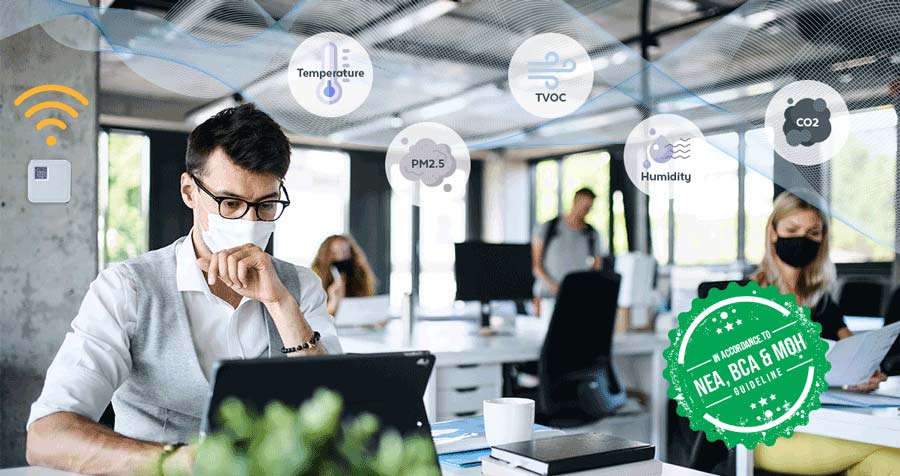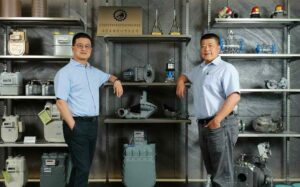
Create a healthier and safer working environment by establishing indoor air quality monitoring policies and efficient cleaning protocols in accordance to WHO and NEA recommendations
When COVID-19 hit the world in 2020, everyone was confined to their homes and offices were forced to close. However, with the spike in vaccination, offices and public spaces have started reopening. In our transition to a post pandemic era, it is important to proceed with precautions and establish new practices to ensure a safe environment for everyone.
Understanding The Virus Transmission
It’s established that the SARS-CoV-2 virus spreads through respiratory droplets, which are released when someone speaks, sneezes, or coughs. As large droplets are heavier and fall onto surfaces, regular cleaning is required to disinfect areas of use. Smaller droplets known as an aerosol on the other hand, can suspend and travel in the air for a period of time in an indoor environment.
For this reason, WHO has published a road map that relevant authorities should consider in the assessment of indoor ventilation and the major steps needed to reach recommended ventilation levels or simply improve indoor air quality (IAQ) in order to reduce the risk of spread of COVID-19.
Creating Safer Workplace
It’s evident that office owners will need to leverage the right strategies and tools to create safer environments. IoT monitoring solutions like air quality sensors, CO2 sensors, as well as temperature and humidity sensors, can keep an eye on indoor air quality, and is an effective way of reducing aerosol transmission by over 60%.
Utilisation Of CO2 Sensors
According to The National Environment Agency (NEA), CO2 levels in occupied areas are often used as a proxy for ventilation adequacy. BCA/NEA/MOH have created specific guidance to monitor CO2 in premises. For example, building managers are advised to aim for CO2 levels below 800 parts per million (ppm). Any measurement exceeding 1100 ppm indicates inadequate ventilation or potential overcrowding.
While there are numerous off-the-shelf CO2 sensors in the market, most of them are not connected. This means manual reading and dedicated manpower to check on CO2 levels at regular intervals. On the other hand, connected CO2 sensors not only allow building management to monitor the CO2 level of multiple locations remotely and simultaneously, it allows facility managers to take real-time actions to improve the ventilation of indoor space.
For example,
- Regulating the occupancy of occupied area
- Opening windows/doors to increase airflow
- Increase outdoor air intake and supply by adjusting AHU/FCUs/PAU/FAFs/EAFs* speed and capacity.
Alerts can be set up to notify building managers via mobile apps such as Telegram when higher CO2 levels are detected in any number of rooms remotely.
In addition, CO2 data collected can be analysed and correlated to the occupancy data over time, to help building managers control the number of people in any given space, large or small. The data can also be transmitted and synced to the building management system (BMS) to eventually automate the entire HVAC (Heating, Ventilation and Air Conditioning) process.
Using the data, building managers can implement data-driven ventilation to allow the flow of fresh air to be automatically optimised. For example, the deployment of high-quality air filtrations systems can further reduce the risk of virus spread by 47%.
As organisations seek to transform their buildings into ‘healthy’ buildings, CO2 sensors are a simple, yet powerful tool to optimise indoor air quality and build confidence as our workforce return to normalcy.
*AHU: air handling unit; FCU: fan coil unit; PAU: primary/pre-cool air handling unit; FAF: fresh air fan; EAF: exhaust air fan







